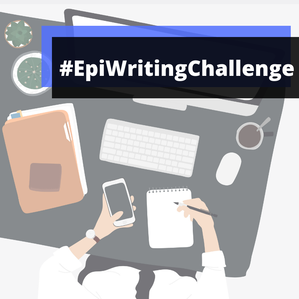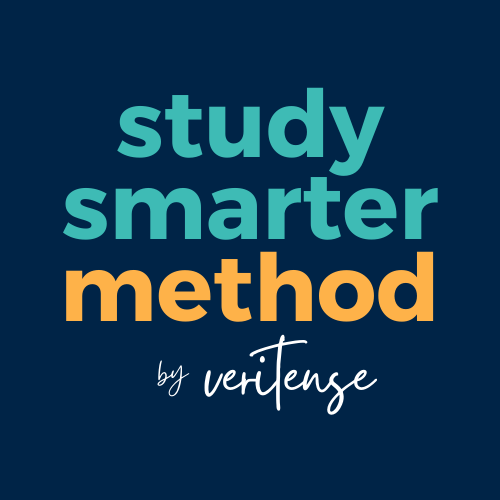|
Bailey DeBarmore,
PhD, MHS, RDN Epidemiologist Pronouns: she/her/hers
|
Bailey is an epidemiologist specializing in real-world evidence and particularly, the use of routinely collected healthcare data for research.
|
More about Bailey
Bailey's doctoral dissertation focused on evaluating the use of routinely collected healthcare data from electronic health records for epidemiologic studies. Using routinely collected healthcare data is cost-efficient and provides a glimpse into the real-world, but comes with methodologic challenges that can bias findings.
She now works in the biotechnology and pharmaceutical field in real-world evidence.
Prior to her doctoral work at UNC Chapel Hill, Bailey earned her masters in clinical epidemiology from Johns Hopkins Bloomberg School of Public Health. Before studying epidemiology, she studied nutritional sciences and gerontology at Cornell University and completed her supervised nutrition residency at the University of Virginia Health System, focusing on evidence-based practice and intensive care and surgical nutrition.
In line with her interests in science writing and communication, in 2018 Bailey hosted the first Epi Writing Challenge on Twitter, modeled after the Rx Writing Challenge. Bailey also maintains a blog about productivity and graduate life and a statistical programming blog, EPICODE, aimed at providing useful tools for epidemiologist programmers.
Bailey is the creator of the Study Smarter Method by Veritense and author of the Study Smarter Method E-Book and associated study guides for the registered dietitian examination.
In her spare time, Bailey enjoys creating handmade gifts for family and friends, managing her Etsy shop, and enjoying North Carolina weather with her rescue dog.
She now works in the biotechnology and pharmaceutical field in real-world evidence.
Prior to her doctoral work at UNC Chapel Hill, Bailey earned her masters in clinical epidemiology from Johns Hopkins Bloomberg School of Public Health. Before studying epidemiology, she studied nutritional sciences and gerontology at Cornell University and completed her supervised nutrition residency at the University of Virginia Health System, focusing on evidence-based practice and intensive care and surgical nutrition.
In line with her interests in science writing and communication, in 2018 Bailey hosted the first Epi Writing Challenge on Twitter, modeled after the Rx Writing Challenge. Bailey also maintains a blog about productivity and graduate life and a statistical programming blog, EPICODE, aimed at providing useful tools for epidemiologist programmers.
Bailey is the creator of the Study Smarter Method by Veritense and author of the Study Smarter Method E-Book and associated study guides for the registered dietitian examination.
In her spare time, Bailey enjoys creating handmade gifts for family and friends, managing her Etsy shop, and enjoying North Carolina weather with her rescue dog.
|
Click the PMID or PMCID link to go to the NCBI website, or click the PDF button to download directly.
Patient Characteristics and Outcomes of Acute Myocardial Infarction Presenting without Ischemic Pain: Insights from the Atherosclerosis Risk in Communities Study
Abstract
Background: Our objective was to describe characteristics of patients presenting with and without ischemic pain among those diagnosed with acute myocardial infarction (MI) using individual-level data from the Atherosclerosis Risk in Communities Study from 2005 to 2019. Methods: Acute MI included events deemed definite or probable MI by a physician panel based on ischemic pain, cardiac biomarkers, and ECG evidence. Patient characteristics included age at hospitalization, sex, race/ethnicity, comorbidities (smoking status, diabetes, hypertension, history of previous stroke, MI, or cardiovascular procedure, and history of valvular disease or cardiomyopathy) and in-hospital complications occurring during the event of interest (pulmonary edema, pulmonary embolism, in-hospital stroke, pneumonia, cardiogenic shock, ventricular fibrillation). Analyses were stratified by MI subtype (STEMI, NSTEMI, Unclassified) and patient characteristics and 28-day case fatality was compared between MI presenting with or without ischemic pain. Results: Between 2005 and 2019, there were 1,711 hospitalized definite/probable MI events (47% female, 26% black, and age of 78 [6.7 years]). A smaller proportion of STEMI patients presented without ischemic pain compared to NSTEMI patients (20% vs 32%). Race, sex, age, and comorbidity profiles did not differ significantly across ischemic pain presentations. Patients presenting without ischemic pain had a higher 28-day all-cause case fatality after adjusting for age, race, sex, and comorbidities. However, after further adjustment, time from symptom onset to hospital arrival, time to treatment, and in-hospital complications explained the difference in 28-day case fatality between ischemic pain presentations. Conclusions: Future research should focus on differences in treatment delay across ischemic pain presentations rather than sex differences in acute coronary syndrome presentation. Hidradenitis Suppurativa in Older Adults
Hidradenitis suppurativa (HS) is a chronic inflammatory condition presenting as recurrent painful nodules, abscesses, and tunnels primarily in intertriginous cutaneous zones. Certain subgroups of patients, such as those living with HIV1 and pediatric patients, have been characterized,2 but reports on HS in adults 65 years or older are lacking. We describe the clinical presentation, disease severity, associated comorbidities, and management of HS in older adults.
Establishing a National Cardiovascular Disease Surveillance System in the United States Using Electronic Health Record Data: Key Strengths and Limitations
Abstract
Cardiovascular disease surveillance involves quantifying the evolving population-level burden of cardiovascular outcomes and risk factors as a data-driven initial step followed by the implementation of interventional strategies designed to alleviate this burden in the target population. Despite widespread acknowledgement of its potential value, a national surveillance system dedicated specifically to cardiovascular disease does not currently exist in the United States. Routinely collected health care data such as from electronic health records (EHRs) are a possible means of achieving national surveillance. Accordingly, this article elaborates on some key strengths and limitations of using EHR data for establishing a national cardiovascular disease surveillance system. Key strengths discussed include the: (1) ubiquity of EHRs and consequent ability to create a more "national" surveillance system, (2) existence of a common data infrastructure underlying the health care enterprise with respect to data domains and the nomenclature by which these data are expressed, (3) longitudinal length and detail that define EHR data when individuals repeatedly patronize a health care organization, and (4) breadth of outcomes capable of being surveilled with EHRs. Key limitations discussed include the: (1) incomplete ascertainment of health information related to health care-seeking behavior and the disconnect of health care data generated at separate health care organizations, (2) suspect data quality resulting from the default information-gathering processes within the clinical enterprise, (3) questionable ability to surveil patients through EHRs in the absence of documented interactions, and (4) the challenge in interpreting temporal trends in health metrics, which can be obscured by changing clinical and administrative processes. Terms and Definitions Used to Describe Recurrence, Treatment Failure and Recovery of Acute Exacerbations of COPD: A Systematic Review of Observational Studies
|
Abstract
Introduction: Acute exacerbations of chronic obstructive pulmonary disease (AECOPDs) are important clinical events, with many patients experiencing multiple AECOPDs annually. The terms used in the literature to define recurring AECOPD events are inconsistent and may impact the ability to describe the true burden of these events. We undertook a systematic review to identify and summarize terms and definitions used in observational studies to describe AECOPD-related events occurring after an initial AECOPD (hereafter “subsequent AECOPD”). Methods: PubMed was searched (2000– 2019) for observational studies on subsequent AECOPD events using broad search strings for “COPD”, “exacerbation”, and “subsequent exacerbation events”. Only English-language studies were included. Small studies (n< 50) and studies focusing on hospital re-admission only were excluded. Extracted data were analyzed descriptively to generate a narrative summary, using a thematic approach to group studies utilizing similar terms for subsequent AECOPD. Results: Forty-seven studies were included. No single, distinct terms or definitions were used to define and identify multiple occurrences of AECOPDs, though most (46) studies used one or more of four clustered terms and definitions: reapse (n = 13), recurrence/re-exacerbation (n = 11), treatment failure (n = 12) and non-recovery/time to recovery (n = 16). Heterogeneity was observed within and between the four clusters with respect to study setting, starting point for observing subsequent AECOPDs, time frame to identify a subsequent AECOPD (except for studies using “time to recovery”), and basis for identifying a subsequent exacerbation. Conclusion: Our review demonstrates that subsequent AECOPDs (including events such as relapse, recurrence/re-exacerbation, treatment failure, non-recovery/time to recovery) are ill-defined in the observational study literature, emphasizing the need to reach consensus on precise and objective definitions (for example, when one AECOPD ends and another begins). Use of standardized terminology and definitions may aid comparability between, and synthesis of, studies, thus improving the understanding of the natural history and burden of exacerbations in COPD patients.
Introduction: Acute exacerbations of chronic obstructive pulmonary disease (AECOPDs) are important clinical events, with many patients experiencing multiple AECOPDs annually. The terms used in the literature to define recurring AECOPD events are inconsistent and may impact the ability to describe the true burden of these events. We undertook a systematic review to identify and summarize terms and definitions used in observational studies to describe AECOPD-related events occurring after an initial AECOPD (hereafter “subsequent AECOPD”). Methods: PubMed was searched (2000– 2019) for observational studies on subsequent AECOPD events using broad search strings for “COPD”, “exacerbation”, and “subsequent exacerbation events”. Only English-language studies were included. Small studies (n< 50) and studies focusing on hospital re-admission only were excluded. Extracted data were analyzed descriptively to generate a narrative summary, using a thematic approach to group studies utilizing similar terms for subsequent AECOPD. Results: Forty-seven studies were included. No single, distinct terms or definitions were used to define and identify multiple occurrences of AECOPDs, though most (46) studies used one or more of four clustered terms and definitions: reapse (n = 13), recurrence/re-exacerbation (n = 11), treatment failure (n = 12) and non-recovery/time to recovery (n = 16). Heterogeneity was observed within and between the four clusters with respect to study setting, starting point for observing subsequent AECOPDs, time frame to identify a subsequent AECOPD (except for studies using “time to recovery”), and basis for identifying a subsequent exacerbation. Conclusion: Our review demonstrates that subsequent AECOPDs (including events such as relapse, recurrence/re-exacerbation, treatment failure, non-recovery/time to recovery) are ill-defined in the observational study literature, emphasizing the need to reach consensus on precise and objective definitions (for example, when one AECOPD ends and another begins). Use of standardized terminology and definitions may aid comparability between, and synthesis of, studies, thus improving the understanding of the natural history and burden of exacerbations in COPD patients.
Out-of-hospital cardiac arrest bystander defibrillator search time and experience with and without directional assistance: a randomized simulation trial in a community setting
|
Johnson AM, Cunningham CJ, Zégre-Hemsey JK, Grewe ME, DeBarmore BM, Wong E, Omofye F, Rosamond WD.Simulation in Healthcare. 2021. Jun 1:10.1097/SIH.0000000000000582. doi: 10.1097/SIH.0000000000000582. Epub ahead of print. PMID: 34081062
|
Abstract
Introduction: Probability of survival after out-of-hospital cardiac arrest (OHCA) doubles when a bystander initiates cardiopulmonary resuscitation and uses an automated external defibrillator (AED) rapidly. National, state, and community efforts have increased placement of AEDs in public spaces; however, bystander AED use remains less than 2% in the United States. Little is known about the effect of giving bystanders directional assistance to the closest public access AED. Methods: We conducted 35 OHCA simulations using a life-sized manikin with participants aged 18 through 65 years who searched for public access AEDs in 5 zones on a university campus. Zones varied by challenges to pedestrian AED acquisition and number of fixed AEDs. Participants completed 2 searches-first unassisted and then with verbal direction to the closest AED-and we compared AED delivery times. We conducted pretest and posttest surveys. Results: In all 5 zones, the median time from simulated OHCA onset to AED delivery was lower when the bystander received directional assistance. Time savings (minutes:seconds) varied by zone, ranging from a median of 0:53 (P = 0.14) to 3:42 (P = 0.02). Only 3 participants immediately located the closest AED without directional assistance; more than half reported difficulty locating an AED. Conclusions: These findings may inform strategies to ensure that AEDs are consistently marked and placed in visible, accessible locations. Continued emphasis on developing strategies to improve lay bystanders' ability to locate and use AEDs may improve AED retrieval times and OHCA outcomes.
Introduction: Probability of survival after out-of-hospital cardiac arrest (OHCA) doubles when a bystander initiates cardiopulmonary resuscitation and uses an automated external defibrillator (AED) rapidly. National, state, and community efforts have increased placement of AEDs in public spaces; however, bystander AED use remains less than 2% in the United States. Little is known about the effect of giving bystanders directional assistance to the closest public access AED. Methods: We conducted 35 OHCA simulations using a life-sized manikin with participants aged 18 through 65 years who searched for public access AEDs in 5 zones on a university campus. Zones varied by challenges to pedestrian AED acquisition and number of fixed AEDs. Participants completed 2 searches-first unassisted and then with verbal direction to the closest AED-and we compared AED delivery times. We conducted pretest and posttest surveys. Results: In all 5 zones, the median time from simulated OHCA onset to AED delivery was lower when the bystander received directional assistance. Time savings (minutes:seconds) varied by zone, ranging from a median of 0:53 (P = 0.14) to 3:42 (P = 0.02). Only 3 participants immediately located the closest AED without directional assistance; more than half reported difficulty locating an AED. Conclusions: These findings may inform strategies to ensure that AEDs are consistently marked and placed in visible, accessible locations. Continued emphasis on developing strategies to improve lay bystanders' ability to locate and use AEDs may improve AED retrieval times and OHCA outcomes.
Achieving Optimal Population Cardiovascular Health Requires an Interdisciplinary Team and a Learning Healthcare System: A Scientific Statement From the American Heart Association
|
Foraker RE, Benziger CP, DeBarmore BM, Cené CW, Loustalot F, Khan Y, Anderson CAM, Roger VL; American Heart Association Council on Epidemiology and Prevention; Council on Arteriosclerosis, Thrombosis and Vascular Biology; and Council on Lifestyle and Cardiometabolic Health. Circulation. 2021. Jan 12;143(2):e9-e18. PMID: 33269600.
|
Abstract: Population cardiovascular health, or improving cardiovascular health among patients and the population at large, requires a redoubling of primordial and primary prevention efforts as declines in cardiovascular disease mortality have decelerated over the past decade. Great potential exists for healthcare systems-based approaches to aid in reversing these trends. A learning healthcare system, in which population cardiovascular health metrics are measured, evaluated, intervened on, and re-evaluated, can serve as a model for developing the evidence base for developing, deploying, and disseminating interventions. This scientific statement on optimizing population cardiovascular health summarizes the current evidence for such an approach; reviews contemporary sources for relevant performance and clinical metrics; highlights the role of implementation science strategies; and advocates for an interdisciplinary team approach to enhance the impact of this work.
Mitochondrial DNA Copy Number and Diabetes in the ARIC Study
|
DeBarmore BM, Longchamp R, Kalyani R, Guallar E, Arking DE, Selvin E, Young JH. BMJ Open Diabetes Res Care. 2020 Aug; 8(1):e001204. PMCID: PMC7430458. DOI: 10.1136/bmjdrc-2020-001204
|
Abstract: Mitochondrial DNA copy number (mtDNA-CN) is a measure of mitochondrial dysfunction and is associated with diabetes in experimental models. To explore the temporality of mitochondrial dysfunction and diabetes, we estimated the prevalent and incident association of mtDNA-CN and diabetes. We assessed the associations of mtDNA-CN measured from buffy coat with prevalent and incident diabetes, stratified by race, in 8954 white and 2444 black participants in the Atherosclerosis Risk in Communities (ARIC) study, an observational cohort study. Follow-up for incident analyses was complete through visit 6, 2016. Mean age at mtDNA-CN measurement was 57 years and 59% were female. Prevalence of diabetes at time of mtDNA-CN measurement was higher in blacks (563/2444, 23%) than whites (855/8954, 10%). The fully adjusted odds of prevalent diabetes for the 10th vs 90th percentile of mtDNA-CN was 1.05 (95% CI 0.74 to 1.49) among black and 1.49 (95% CI 1.20 to 1.85) among white participants. Over a median follow-up time of 19 years (Q1, Q3: 11, 24 years), we observed 617 incident diabetes cases among 1744 black and 2121 cases among 7713 white participants free of diabetes at baseline. The fully adjusted hazard of incident diabetes for the 10th vs 90th percentile of mtDNA-CN was 1.07 (95% CI 0.84 to 1.38) among black and 0.97 (95% CI 0.86 to 1.10) among white participants. Lower mtDNA-CN in buffy coat was associated with prevalent diabetes in white but not black ARIC participants. Lower mtDNA-CN was not associated with incident diabetes over 20 years of follow-up in whites or blacks.
Highlights from the American Heart Association QCOR 2019 Scientific Sessions
|
DeBarmore BM, Essien UR, Dean C, Thompson MP, Sterling MR. Circ Cardiovasc Qual Outcomes. 2019. Sep;12(9):e005906. Epub 2019 Sept 4. PMID: 31480941
|
Introduction: The American Heart Association (AHA) Quality of Care and Outcomes Research (QCOR) 2019 Scientific Sessions was held in Arlington, Virginia from April 5 to 6. QCOR brings together clinicians, researchers, and policymakers to discuss healthcare quality and patient outcomes, with a particular focus on early career development at the annual QCOR Scientific Sessions. This year’s programming featured intertwined topics across the spectrum of quality improvement (QI), including real-world evidence impacting clinical care to real-world evidence to health policy implications, with a notable focus on digital technology in research and patient engagement. Programming featured 4 interactive workshops, >20 oral abstracts, and nearly 200 poster presentations. Plenary sessions focused on behavioral economics and real-world data for evidence generation, featuring a variety of speakers from academia and industry. Oral abstract sessions included presentations on current quality improvement initiatives such as fast-track extubation protocols and preoperative dual antiplatelet therapy use, data science using natural language processing and deep learning to analyze echocardiogram data, and health IT exploring how patients perceive mobile health applications and how a health system can create a disease-specific registry for both clinical care and outcomes research.
Highlights From the American Heart Association's EPI|LIFESTYLE 2019 Scientific Sessions
|
Alvaro A, Anderson MD, Bancks MP, Brown S, Caughey MC, Chang AR, Delker E, Foti K, Gingras V, Nanna MG, Razavi AC, Scott J, Selvin E, Tcheandjieu C, Thomas AG, Turkson‐Ocran RN, Webel A, Young DR, DeBarmore BM. J Am Heart Assoc. 2019 June; 8(11):e012925. PMCID: 6585352
|
Introduction: This year's American Heart Association (AHA) EPI|Lifestyle Scientific Sessions were held March 5 to 8, 2019 in Houston, Texas, a combined meeting of the Council on Epidemiology and Prevention and the Council on Lifestyle and Cardiometabolic Health. The meeting focused on the influence of omics, traditional and emerging risk factors, social determinants, and lifestyle behaviors on cardiovascular health.
Highlights from the American Heart Association’s EPI|Lifestyle 2018 Scientific Sessions
|
DeBarmore BM, Pandey A, Plante TB, Wilner B, Young DR, Matthews AT. J Am Heart Assoc. 2018 Jun 27;7(13). PMCID: 6064888
|
Introduction: The American Heart Association's (AHA's) EPI|Lifestyle specialty conference, with an overall theme of promoting risk prediction and prevention, was held March 19 to 23, 2018, in New Orleans. The primary learning objectives were (1) identifying modifiable risk factors and ways to meet AHA ideal cardiovascular health (CVH) standards, (2) elucidating the causes and consequences of health disparities and ways to address the AHA goals, (3) discussing the current guidelines and what adherence means for CVH in both adults and juveniles, and (4) understanding and identifying opportunities to incorporate precision medicine. Programming included sessions for all career levels, from trainees to seasoned professionals. Attendees’ understanding of promoting CVH was enhanced by oral and poster presentations and participation in networking opportunities.
Association of ambulatory blood pressure variability with coronary artery calcium
|
DeBarmore B, Lin FC, Tuttle LA, Olsson E, Hinderliter A, Klein JL, Viera AJ. J Clin Hypertens. 2018 Feb;20(2):289-296. Epub 2018 Jan 25. PMCID: 5820162.
|
Abstract: Blood pressure (BP) variability is associated with progression to clinical atherosclerosis. The evidence is inconclusive if BP variability predicts cardiovascular outcomes in low-risk populations. The aim was to analyze the association of 24-hour BP variability with coronary artery calcium (CAC) among a group of individuals without coronary artery disease. The Masked Hypertension Study targeted patients with borderline high BP (140−149 mmHg systolic and/or 80–95 mmHg diastolic). Ambulatory blood pressure monitoring (ABPM) was performed at two timepoints, 8 days apart. CAC was measured at exit visit via cardiac CT and reported as Agatston Score. Weighted standard deviations and average real variability were calculated from ABPM. Of the 322 participants who underwent cardiac CT, 26% (84) had CAC present, 52% (168) were female, and 21% (64) were black. BP variability did not differ by CAC group. In this low cardiovascular risk group, CAC was not associated with 24-hour ambulatory BP variability.
EPICODEAs an epidemiology student, I found myself trying to improve my code with each project. However, online resources tended towards dry software documentation or highly advanced macro code that was difficult to understand. I launched EPICODE with the goal of providing practical solutions for conducting great epidemiology methods.
Website |
EPI Writing ChallengeThe idea behind the #EpiWritingChallenge was 4 weeks of community support and writing tips to encourage one another for a month of productive writing. Epidemiologists and public health researchers from all over the world signed up on Twitter, and received daily emails with topics ranging from "How to Set SMART Goals" and "Making Time and Space for Writing" to 3 days of tips for "Crystal Clear Writing" and "How to Incorporate Coauthor Feedback".
Website |
VeritenseSince earning my Registered Dietitian credential, I have been tutoring RD students for their licensing exam. I developed the Study Smarter Method by Veritense during this time as a way to foster critical thinking skills and big picture learning in my students, rather than rote memorization. The Study Smarter Method is now the go-to Pass the Exam Prep guide for All Access Dietetics and is expanding to general audiences. Website -- Instagram
|






